Immense scientific progress in the last half century at an unforeseen accelerated rate has had a significant impact on business and society. The current global trends show beyond doubt that technology is improving at a rapid rate with not only the maturing of advanced technologies such as Web3 and Quantum but also the emergence of an increasing list of new technologies every day. Innovations are happening every second as companies around the world invest time and money to develop sophisticated technologies that has brought about immense technological improvements right out of the R&D departments and into our everyday lives. Technology has the power to do many things and we’re privileged to be living in a time where science and technology can ease our lives as well as transform existing businesses and personal lives.
Recognising the profound impact the future technology can have on our society, the World Economic Forum has launched its Technology Pioneer community in the year 2000. The community that consists of early-to growth-stage companies from around the world aims to solve global issues and explore future trends. They are committed to the design, development, and deployment of new technologies and innovations in the key priority areas of society which encompasses well-being of the human race and economic growth. By recognising technology pioneers every year through initiatives, activities, and events, the Forum is geared to have a significant impact on business and society.
Let us explore some of the emerging technologies that have the highest potential for near-term business impact while bringing about a substantial outcome on the workforce in the coming years.
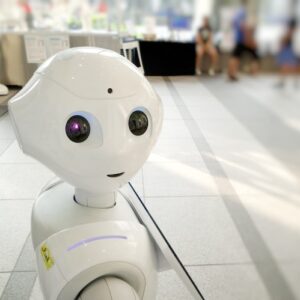 Artificial Intelligence: Artificial intelligence, or AI, refers to the ability of machines to act intelligently and make decisions. They are in fact smart machines that replicate the capabilities of the human mind and accomplish tasks that typically require human intelligence. They solve problems and even predict future outcomes by processing what they learn from data. With more and more tech companies across various industries investing heavily in artificially intelligent technologies, AI is going to revolutionize almost every facet of modern life. Indeed, AI has become a growing part of everyday life and will advance in the coming years to increase productivity while eliminating routine jobs and repetitive tasks. This will in turn enhance the quality of our lives. Some of the AI driven powers systems like SPAM filters, Google Maps, Alexa, Siri, Amazon’s product recommendations, Spotify’s personalized recommendations, dating apps, and fitness trackers are projected to diversify even further. With a great growth potential in applications like Chatbots, logistics, self-driving cars, virtual nursing assistants, personalized textbooks and tutors, and even artificial creativity, there will be extensive versatility in the job market as new jobs will arise to replace displaced jobs. In the field of education too AI will make great strides to understand children’s interests better and connect them with the right experts. At the same time, they will be able to provide insights to parents and teachers in making them better mentors and improving the quality of education.
Artificial Intelligence: Artificial intelligence, or AI, refers to the ability of machines to act intelligently and make decisions. They are in fact smart machines that replicate the capabilities of the human mind and accomplish tasks that typically require human intelligence. They solve problems and even predict future outcomes by processing what they learn from data. With more and more tech companies across various industries investing heavily in artificially intelligent technologies, AI is going to revolutionize almost every facet of modern life. Indeed, AI has become a growing part of everyday life and will advance in the coming years to increase productivity while eliminating routine jobs and repetitive tasks. This will in turn enhance the quality of our lives. Some of the AI driven powers systems like SPAM filters, Google Maps, Alexa, Siri, Amazon’s product recommendations, Spotify’s personalized recommendations, dating apps, and fitness trackers are projected to diversify even further. With a great growth potential in applications like Chatbots, logistics, self-driving cars, virtual nursing assistants, personalized textbooks and tutors, and even artificial creativity, there will be extensive versatility in the job market as new jobs will arise to replace displaced jobs. In the field of education too AI will make great strides to understand children’s interests better and connect them with the right experts. At the same time, they will be able to provide insights to parents and teachers in making them better mentors and improving the quality of education.
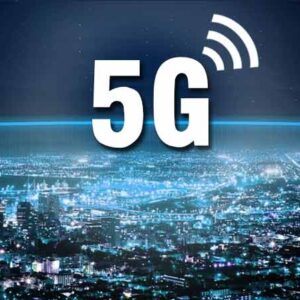 5G technology: 5G is the fifth generation of cellular networks after 1G, 2G, 3G, and 4G networks. It is a new global wireless standard and is up to 100 times faster than 4G. 5G is designed to connect virtually everyone and everything together right from home appliances to cars and gadgets we’ve yet to even invent. This will open a wealth of possibilities for “connected devices” that can deliver higher multi-Gbps peak data speeds, ultra low latency, greater reliability, massive network capacity, increased availability, and a more enhanced day-to-day experiences for users without overcrowding. With 5G, data can travel at multi-gigabit speeds, with potential peak speeds as high as 20 gigabits per second (Gbps). This will aid far reaching improvements in services such as e-health, connected vehicles, and traffic systems leading to a smarter, safer, and sustainable future. Higher performance and improved efficiency will enhance the performance of digital experiences such as online gaming, videoconferencing, and self-driving cars. 5G networks are virtualized and software-driven that will take connectivity to the next level by capitalising on cloud technologies.
5G technology: 5G is the fifth generation of cellular networks after 1G, 2G, 3G, and 4G networks. It is a new global wireless standard and is up to 100 times faster than 4G. 5G is designed to connect virtually everyone and everything together right from home appliances to cars and gadgets we’ve yet to even invent. This will open a wealth of possibilities for “connected devices” that can deliver higher multi-Gbps peak data speeds, ultra low latency, greater reliability, massive network capacity, increased availability, and a more enhanced day-to-day experiences for users without overcrowding. With 5G, data can travel at multi-gigabit speeds, with potential peak speeds as high as 20 gigabits per second (Gbps). This will aid far reaching improvements in services such as e-health, connected vehicles, and traffic systems leading to a smarter, safer, and sustainable future. Higher performance and improved efficiency will enhance the performance of digital experiences such as online gaming, videoconferencing, and self-driving cars. 5G networks are virtualized and software-driven that will take connectivity to the next level by capitalising on cloud technologies.
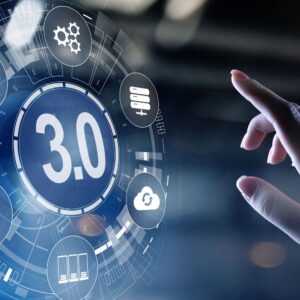 Web3 Technologies: As of now, the world is gradually moving faster towards Web3 over the existing Web2 landscape. Although Web2 is considerably dynamic with user-generated content and a certain level of interactivity, the platform was mostly provided by third parties and owned by tech giants like Meta, Twitter, and Microsoft. On the other hand Web3 technologies will provide users an open ground for creating content alongside control, ownership, and monetization privileges. Web3 technologies which has Blockchain, cryptocurrencies, and NFTs as its prime drivers, will operate through peer-to-peer networks which are basically decentralized networks of computers rather than a traditional management structure or a set of centralized servers belonging to a specific entity. Powerful features of Web3 such as decentralization, transparency, and immutability will easily remove the need for intermediaries where users can interact with different online services while having complete ownership of their data and enjoy the privilege of peer-to-peer, and permissionless transactions. Web3 will prioritise on user privacy and anonymity. Hence users will no longer have to worry that their data is being used for advertising or sold to other companies and this will in turn enhance better social boundaries. The usage of decentralised applications will boost innovation and entrepreneurship. The primary reason behind this will be the elimination of bureaucratic hurdles and monopoly of tech giants thus paving the way for creating companies faster. This will again empower collective ownership by shareholders that will be at the same time completely transparent and autonomous in nature.
Web3 Technologies: As of now, the world is gradually moving faster towards Web3 over the existing Web2 landscape. Although Web2 is considerably dynamic with user-generated content and a certain level of interactivity, the platform was mostly provided by third parties and owned by tech giants like Meta, Twitter, and Microsoft. On the other hand Web3 technologies will provide users an open ground for creating content alongside control, ownership, and monetization privileges. Web3 technologies which has Blockchain, cryptocurrencies, and NFTs as its prime drivers, will operate through peer-to-peer networks which are basically decentralized networks of computers rather than a traditional management structure or a set of centralized servers belonging to a specific entity. Powerful features of Web3 such as decentralization, transparency, and immutability will easily remove the need for intermediaries where users can interact with different online services while having complete ownership of their data and enjoy the privilege of peer-to-peer, and permissionless transactions. Web3 will prioritise on user privacy and anonymity. Hence users will no longer have to worry that their data is being used for advertising or sold to other companies and this will in turn enhance better social boundaries. The usage of decentralised applications will boost innovation and entrepreneurship. The primary reason behind this will be the elimination of bureaucratic hurdles and monopoly of tech giants thus paving the way for creating companies faster. This will again empower collective ownership by shareholders that will be at the same time completely transparent and autonomous in nature.
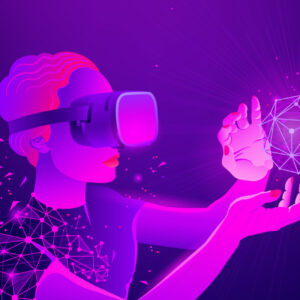 Extended Reality (XR): Extended reality, or XR is an emerging umbrella term inclusive to immersive learning technologies that we have today. It includes virtual reality (VR), augmented reality (AR), mixed reality (MR) as well as additional immersive digital experiences to be created in the future. XR is expected to become an $80 billion market by 2025 as predicted by Goldman Sachs. No wonder, with lowering hardware costs and increasing processing power, XR technology is already finding wide scale application in the real world. The way we interact with technology is likely to dramatically change as these technologies combine to create virtual shared spaces that business teams can use to hold meetings or work on projects. With new world problems such as the Covid pandemic challenging our traditional work models, Microsoft Mesh and its competitors are working towards capitalising on our new remote-work era.
Extended Reality (XR): Extended reality, or XR is an emerging umbrella term inclusive to immersive learning technologies that we have today. It includes virtual reality (VR), augmented reality (AR), mixed reality (MR) as well as additional immersive digital experiences to be created in the future. XR is expected to become an $80 billion market by 2025 as predicted by Goldman Sachs. No wonder, with lowering hardware costs and increasing processing power, XR technology is already finding wide scale application in the real world. The way we interact with technology is likely to dramatically change as these technologies combine to create virtual shared spaces that business teams can use to hold meetings or work on projects. With new world problems such as the Covid pandemic challenging our traditional work models, Microsoft Mesh and its competitors are working towards capitalising on our new remote-work era.
As a greater number of companies, including big players like Google and Facebook, are getting into the bandwagon of using both augmented reality and virtual reality devices in the workplace, this technology will become more common, affordable, and comfortable to use. This will increase the chance of its widespread use and an ecosystem of apps will form for consumers and enterprises alike. XR being a primary point of entry into the Metaverse, it is set to transform the digital world of gaming, meeting up, going to events, and the concept of virtual universe where we can be whoever or whatever we want. It will revolutionize the customer experience in retail as customers will have an experience of trying out products before buying. For example, they will be able to try out dresses on a virtual avatar or sit in their amphitheater seats before making a purchase. This will in turn boost brand engagement. With widespread acceptance of augmented reality apps, workplace learning will become more effective. In the coming years XR will find far-reaching application worldwide in multiple areas such as visual representations of blueprints, virtual scale models of products in development or even for simple things like virtual team meetings.
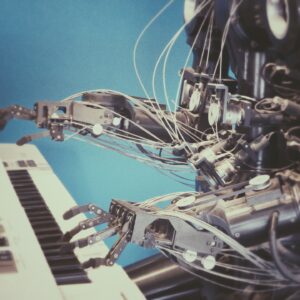 Robotics: With the surge of robotic gadgets such as robot vacuum cleaners and smart home appliances, robots now represent a viable alternative to labour. Personal robots such as the uArm Swift have become popular in offices – a cool desktop robot that completes menial tasks such as completing 3D prints and laser engraving or even doing something as ordinary as passing a cup of coffee. As we speak, more and more innovations occur for the purpose of building, operating and maintaining advanced robots in the coming years. Most likely we will soon find ourselves surrounded by a motley of useful robots be it industrial robots, agricultural robots or those helping around the home as butlers or chefs.
Robotics: With the surge of robotic gadgets such as robot vacuum cleaners and smart home appliances, robots now represent a viable alternative to labour. Personal robots such as the uArm Swift have become popular in offices – a cool desktop robot that completes menial tasks such as completing 3D prints and laser engraving or even doing something as ordinary as passing a cup of coffee. As we speak, more and more innovations occur for the purpose of building, operating and maintaining advanced robots in the coming years. Most likely we will soon find ourselves surrounded by a motley of useful robots be it industrial robots, agricultural robots or those helping around the home as butlers or chefs.
Rudimentary tasks such as cleaning and delivery will soon widen the robotics’ workforce representation as the current trends reveal that people are increasingly moving into soft-skilled and human-focused jobs. Reduction in physical labour will make the transition for the human race a beneficial one as it will undoubtedly promote health and wellness while still maintaining the place of humans as the centerpiece of a competitive business. Amazon is working towards designing robots that can perform the tasks of selecting items and moving them around the warehouse so as to reduce their workforce of 50,000 in warehouses. Same is the case for the restaurant industry where firms are looking to implement robotics in labour intensive areas like food delivery. Other areas where the application of robotics is expected to rise in huge magnitude in the near future will be libraries, automotive industry, aeronautical industry, agriculture, food, pharmaceuticals as well as the mental health and wellness sector.

